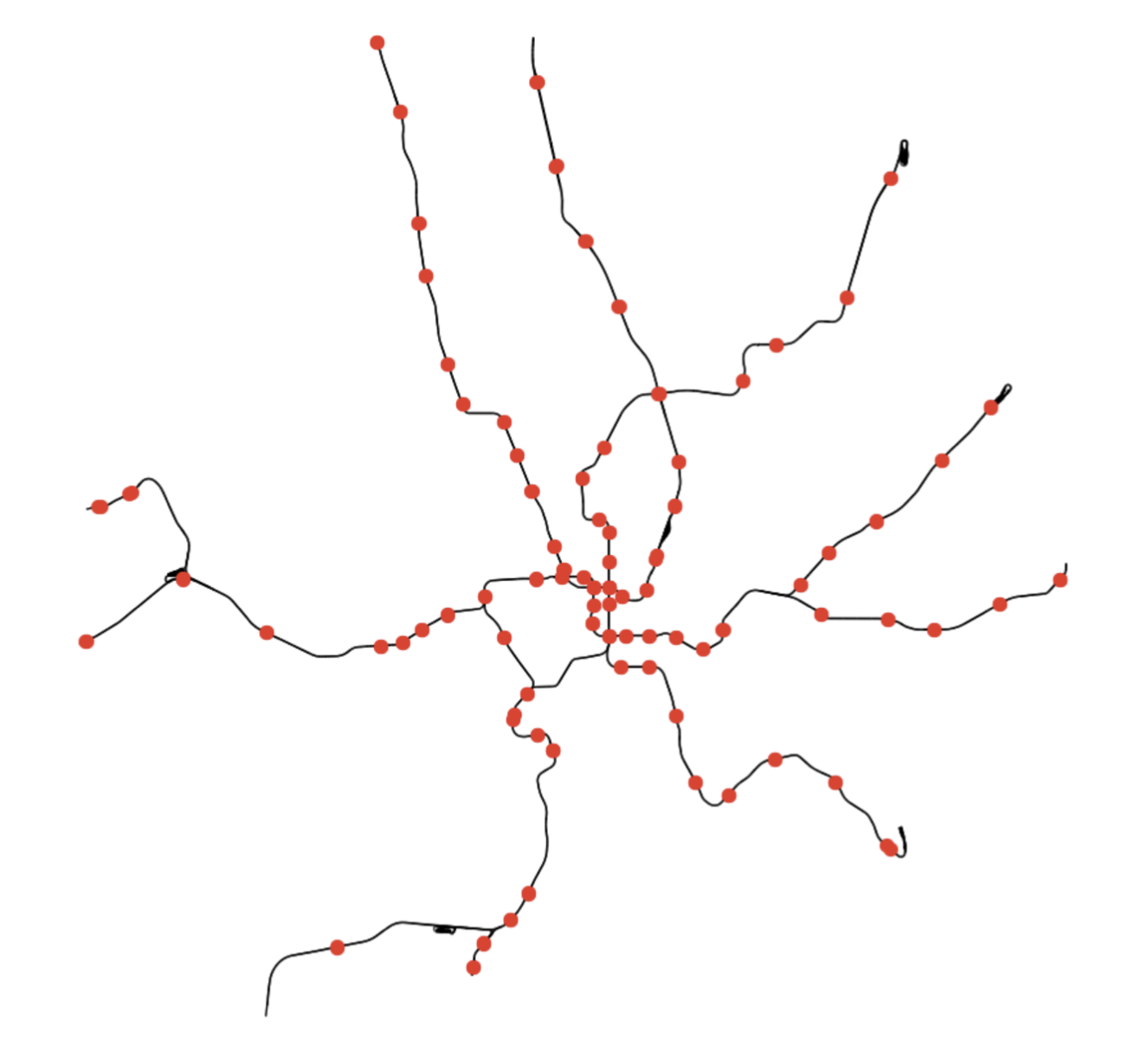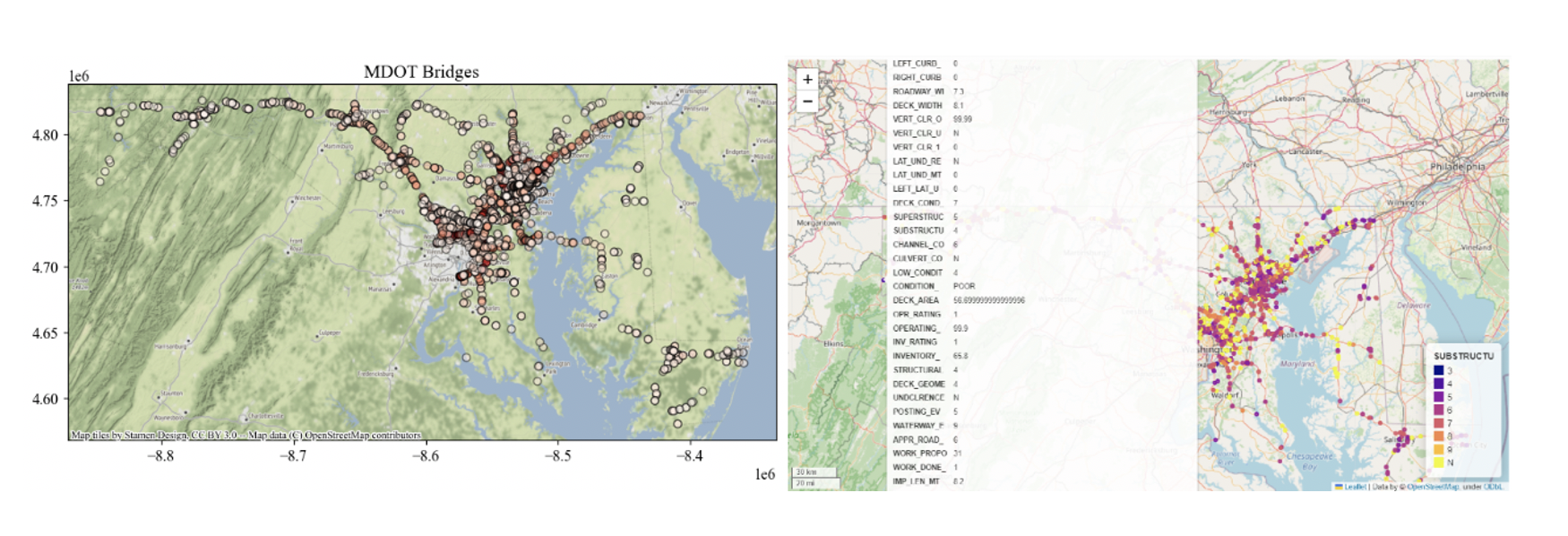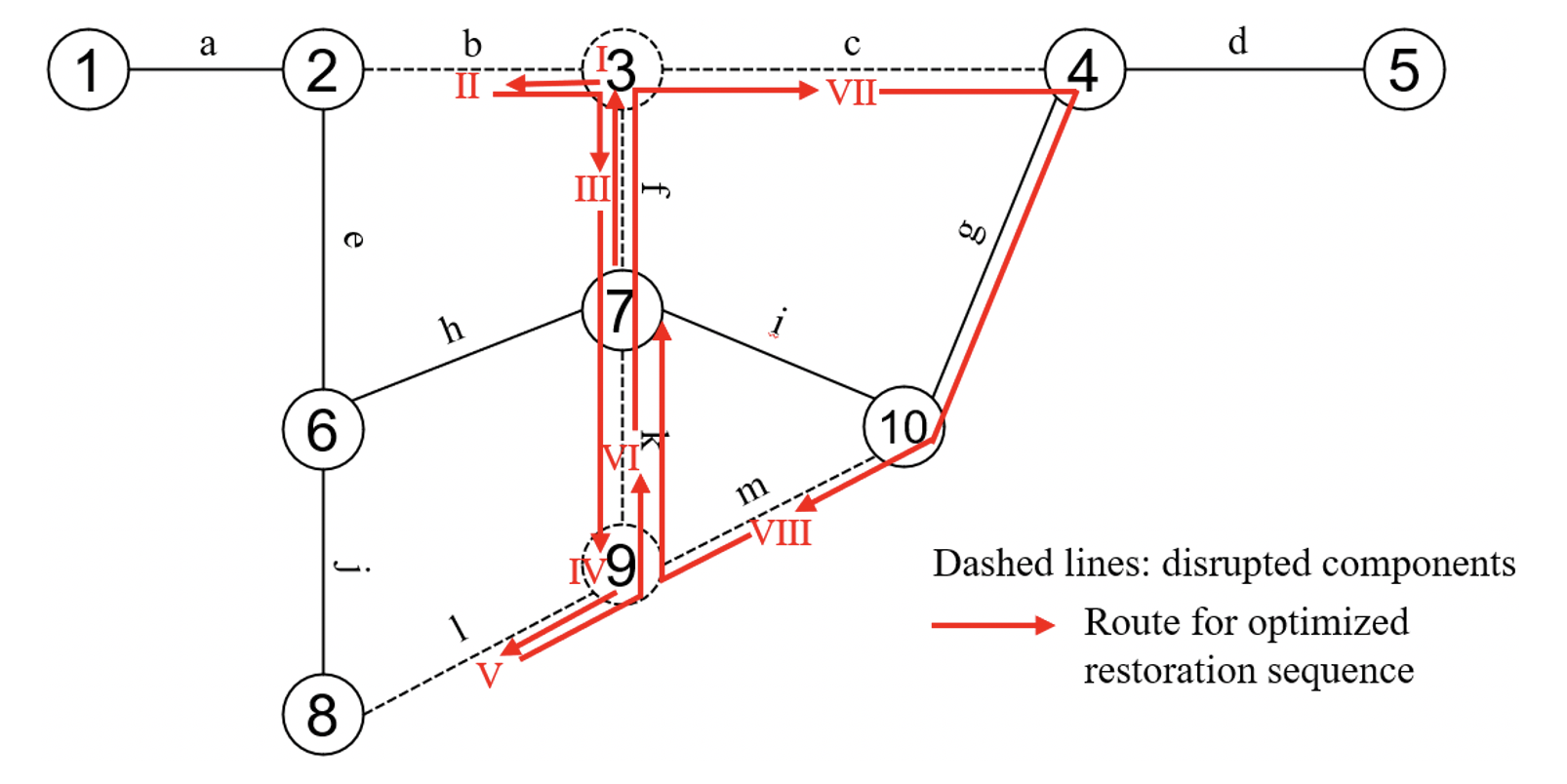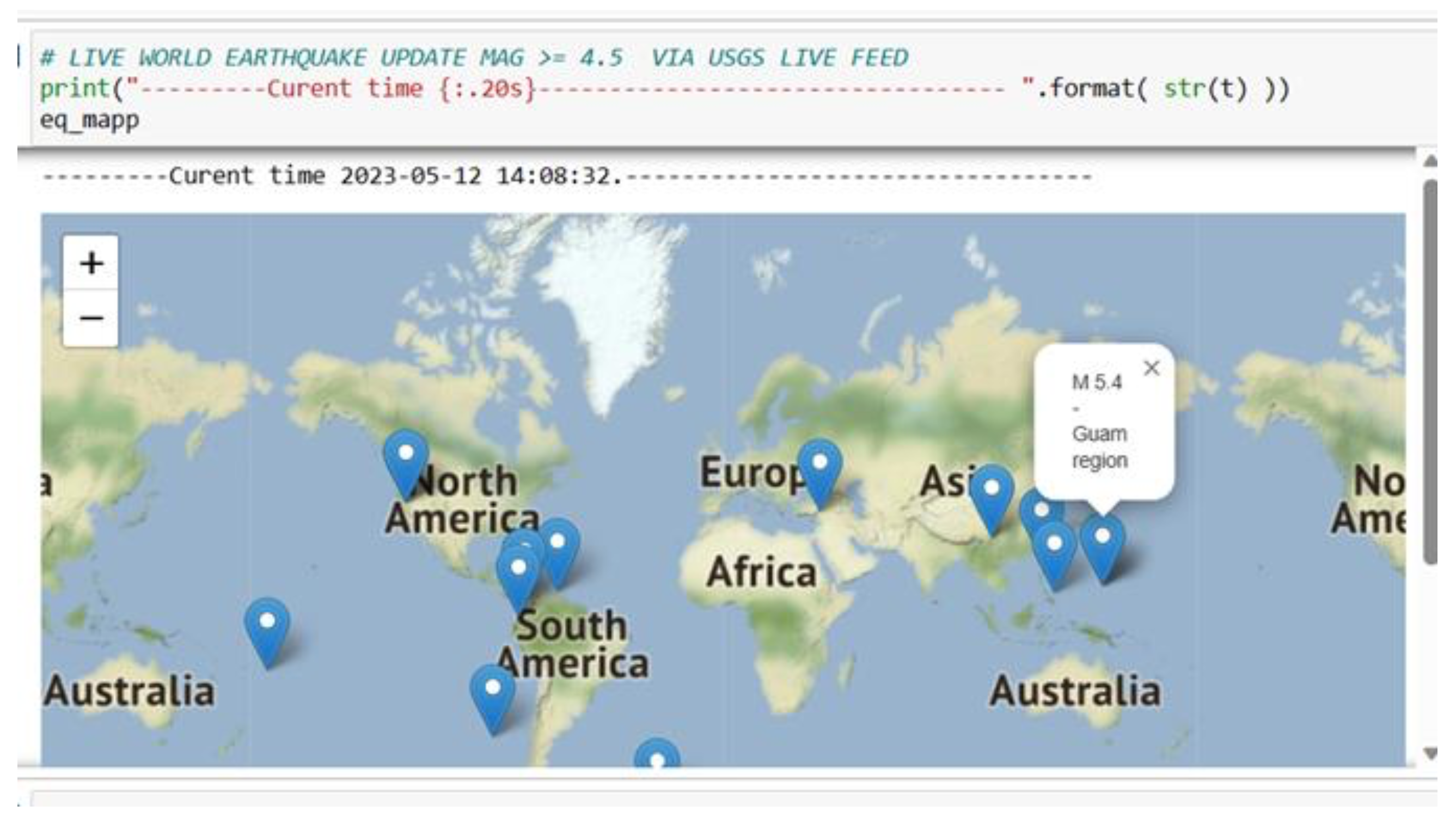
Figure 1. Washington DC metro map.
 ENCE 688R Projects, Spring Semester, 2023
ENCE 688R Projects, Spring Semester, 2023
[ Project 1 ]: Washington DC Metro System Model
[ Project 2 ]: Ontology for Bridge Management System in Maryland
[ Project 3 ]: Bi-level Optimization of Disrupted Network Restoration
[ Project 4 ]: Live World Earthquake (Magnitude 4.5+)
Title: Washington DC Metro System Model
Author: Ainur Alibayeva
Abstract: The Washington DC Metro (see Figure 1) is a crucial transportation system that serves the metropolitan area, providing commuters with a convenient and efficient way to travel throughout the city. While the system has numerous benefits, it also faces its fair share of challenges, including issues with reliability, safety, and accessibility. Despite these challenges, the Metro continues to be a critical part of the region's transportation infrastructure, with millions of riders relying on it daily to get to work, school, and other destinations. To address the challenges facing the Metro, policymakers and transportation planners need to have a comprehensive understanding of the system's functioning and how to optimize it for better performance. By analyzing data and using predictive modeling techniques, they can make informed decisions about infrastructure investments, scheduling changes, and other strategies to improve the Metro's reliability and safety while ensuring it remains accessible to all riders.

Figure 1. Washington DC metro map.
The objective of this project is to build a simplified model of the Washington DC metro network using Python. The project involves downloading an OpenStreetMap (OSM) file of Washington DC and extracting the metro details from the file using the osmfilter package.
References
Title: Ontology for Bridge Management System in Maryland
Author: Naiyi Li
Abstract: A modern bridge management system (BMS) is a comprehensive software platform that enables the efficient and effective management of bridge structures over their service lifespan. It integrates various data sources, analytical tools, and decision-making mechanisms to help bridge owners and engineers in making informed decisions about inspection, maintenance, repair, and rehabilitation. An ontology-based bridge management software framework collects data from management agencies and forms a network of structures that supports automatic reasoning to assist in decision-making. In this study, bridges managed by the Maryland Department of Transportation are assembled into an ontology-based system that determines which bridge demands priority in terms of inspection, maintenance, repair, and rehabilitation. Each bridge is represented by an ontological hierarchy with corresponding components and properties. It also incorporates the geological distance between the structures to identify efficient plans for maintenance schedule.

Figure 2. MDOT (Maryland Department of Transportation) bridges.
Sources of Data
References
Title: Bi-level Optimization of Disrupted Network Restoration
Author: Fei Wu
Abstract: In a rail freight network, multiple types of cargo flow through links and nodes under capacity and speed constraints to satisfy demands over the network. These flows can be optimized for a specific objective such as cost minimization or benefit maximization. Occasionally, disruption events damage multiple components in the network, reducing their capacities and increasing their travel times. This makes the minimized overall system cost higher than normal. With limited labor resources, the challenge is to find out the best sequence to recover the damaged components so that the cumulative increment of system cost is minimized.

Figure 3. The sequence to restore a damaged rail freight network.
In this course project, a bi-level optimization model coded in Python will be presented and demonstrated. The test rail freight network will be modeled using the NetworkX package, with the capacity, length and travel time attributes associated with the nodes and links. Under each state of the network, the lower-level model will use the DoCPLEX library (a Python API of CPLEX) for solving the LP problem to minimize the system cost. Under each given disruption scenario, the upper-level will apply the customized genetic algorithm to find the best sequence to restore the damaged network components, so that the total increment of lower-level minimized cost (accumulated over the whole restoration process) is minimized. The network load status in each stage of the restoration process will be visualized (if time permits).
References
Title: Live World Earthquake (Magnitude 4.5+)
Author: Tigist Getaneh Shibeshi
Abstract: An earthquake is a geophysical natural hazard that can be provoked or affected by anthropogenic processes, e.g. land-use change, drainage and construction. Creating awareness of the past and present seismic activity of a city or a particular area, state or territory is very beneficial to those who are involved in building infrastructures.

Figure 4. Live feed visualization of earthquakes (magnitude 4.5+).
The computer programs provide daily earthquake (EQ) worldwide occurrences via USGS feed and display earthquakes magnitude at the epicenter. It also displays the magnitude and location of worldwide EQ occurred during the last one month.
References
Developed in April 2023 by Mark Austin
Copyright © 2023, Department of Civil and Environmental Engineering, University of Maryland